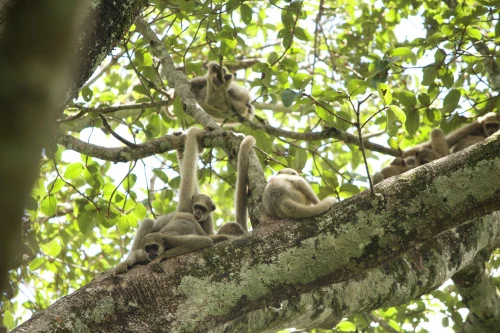Northern Muriqui Monkeys: Conservation Successes and Challenges in a Changing World
Despite remarkable population growth since 1982, the critically endangered northern muriqui monkeys of Brazil’s Atlantic Forest face renewed threats, as revealed by a long-term study published in the journal Ecology.
A Rare Long-Term Study
For over 40 years, Karen Strier, a professor of anthropology at UW-Madison, has led detailed research into the behavior and ecology of these peaceful and egalitarian primates. Strier’s work, in collaboration with Anthony Ives, a professor of ecology and evolution, has uniquely combined hands-on field observation with advanced statistical modeling.
By tracking individual muriquis’ births, deaths, behaviors, and relationships, the team offers insights far beyond simple population counts—uncommon for studies of endangered species.
Unexpected Population Decline
When Strier began studying the muriquis in 1982, their population stood at just 50 individuals. By 2015, thanks to conservation protections, the group had grown to an impressive 356 animals. At that time, models predicted continued exponential growth to a stable carrying capacity of around 500 individuals.
However, unforeseen challenges altered this trajectory. A two-year drought beginning in 2014 and a yellow fever outbreak in 2016 caused a sudden spike in mortality that has not subsided. Today, the updated model predicts a much lower carrying capacity of just 200 animals, assuming no further environmental shocks.
Habitat Stressors and Conservation Concerns
The sudden population decline has raised alarm bells about environmental stressors in the muriquis’ habitat. Potential culprits include:
- Food scarcity due to declines in forest productivity,
- Climate stress resulting from droughts and warmer temperatures,
- Predation pressures that may have increased with habitat changes.
While the muriquis maintain a steady birth rate, their elevated mortality rate points to external factors threatening their survival.
Lessons for Future Conservation
Strier’s groundbreaking data offer hope by informing conservation strategies that address these environmental challenges. Conservationists like Leandro Jerusalinsky of Brazil’s National Center for Research and Conservation of Primates highlight the importance of this research in improving habitat management and creating wildlife corridors to connect isolated populations.
The findings also emphasize the value of long-term research. Without continuous data collection beyond 2015, the impact of drought and disease might have gone undocumented, giving a false impression of the population’s stability.
A Call for Action in a Changing Climate
The study further highlights the growing risks of climate change for primates like the muriqui. As global models predict warmer and drier conditions, food scarcity, habitat degradation, and disease outbreaks could become more frequent, posing new challenges for already vulnerable species.
By understanding how these threats impact northern muriquis, conservationists can design targeted policies to improve habitat quality, mitigate climate stress, and safeguard the future of these peaceful primates.
As Jerusalinsky reflects:
“Even in the desperation we have facing this situation of the muriquis, this gives us a lot of hope in effectively designing the best strategies possible to try to save this species.”
The long-term commitment of researchers like Karen Strier serves as both a critical scientific resource and a beacon of hope for the preservation of one of the world’s most endangered primates.
